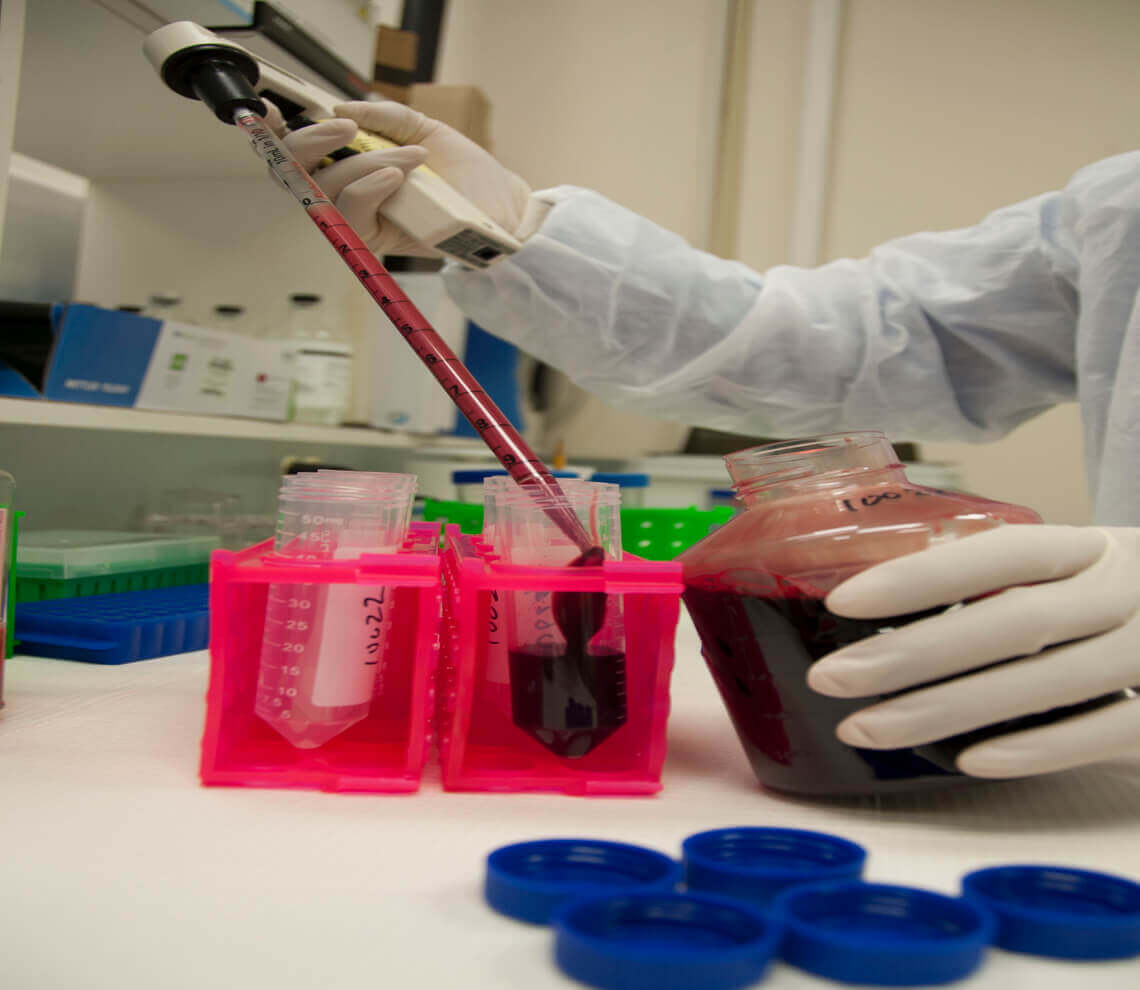- Our Suppliers
- MBS Monoclonals
- MOUSE Anti-HUMAN ALPHA FETOPROTEIN RECEPTOR Antibody
Product short description
Price:
503 EUR
Size:
200ug
Catalog no.:
GEN214498
Product detailed description
Clone
50
Gene name
N/A
Gene name synonims
N/A
Other gene names
N/A
Purification method
N/A
Other names
N/A
Immunoglobulin isotype
IgG2a
French translation
anticorps
Category
Antibodies
Clonality
Monoclonal
Latin name
Mus musculus
Subcategory
Mnoclonal antibodies
Host organism
Mouse (Mus musculus)
Also known as
ALPHA FETOPROTEIN RECEPTOR
Concentration
IgG concentration 1.0mg/ml
Form/Appearance
Purified (Purified IgG - liquid)
Tested applications:
ELISA (EIA), Immunohistology - Paraffin (IHC), Western Blot (WB)
Species reactivity
Human (Homo sapiens); Due to limited knowledge and inability for testing each and every species, the reactivity of the antibody may extend to other species which are not listed hereby.
Storage and shipping
Store the antibody at +4 degrees Celsius for short-term storage and at -20 degrees Celsius for long-term.Storage in frost-free freezers is not recommended. the antibody should be stored undiluted. Repeated freeze - thaw cycles may denature the peptide chains of the antibody and therefore should be maximally avoided. If there is a precipitate in the vial we recommend you to briefly microcentrifugate it prior to use. Shelf Life: 18 months from date of dispatch.
Test
MBS Monoclonals supplies antibodies that are for research of human proteins.Mouse or mice from the Mus musculus species are used for production of mouse monoclonal antibodies or mabs and as research model for humans in your lab. Mouse are mature after 40 days for females and 55 days for males. The female mice are pregnant only 20 days and can give birth to 10 litters of 6-8 mice a year. Transgenic, knock-out, congenic and inbread strains are known for C57BL/6, A/J, BALB/c, SCID while the CD-1 is outbred as strain.
Properties
If you buy Antibodies supplied by MBS Monoclonals they should be stored frozen at - 24°C for long term storage and for short term at + 5°C.Human proteins, cDNA and human recombinants are used in human reactive ELISA kits and to produce anti-human mono and polyclonal antibodies. Modern humans (Homo sapiens, primarily ssp. Homo sapiens sapiens). Depending on the epitopes used human ELISA kits can be cross reactive to many other species. Mainly analyzed are human serum, plasma, urine, saliva, human cell culture supernatants and biological samples.
Specificity and cross-reactivity
ALPHA FETOPROTEIN RECEPTOR This item recognises alpha fetoprotein receptor (AFP receptor), a 62-67kDa cell surface protein that mediates the uptake of AFP by proliferating or differentiating cells. AFP is expressed during gestation, but after birth levels in healthy adults drop to trace amounts. High expression of AFP and AFP receptor in adults can be indicative of certain cancers, especially hepatocellular carcinoma.; Since it is not possible to test each and every species our knowledge on the corss reactivity of the antibodies is limited. This particular antibody might cross react with speacies outside of the listed ones.
Description
The MOUSE Anti- ALPHA FETOPROTEIN RECEPTOR Antibody is a α- or alpha protein sometimes glycoprotein present in blood.This antibody needs to be stored at + 4°C in a fridge short term in a concentrated dilution. Freeze thaw will destroy a percentage in every cycle and should be avoided.The receptors are ligand binding factors of type 1, 2 or 3 and protein-molecules that receive chemical-signals from outside a cell. When such chemical-signals couple or bind to a receptor, they cause some form of cellular/tissue-response, e.g. a change in the electrical-activity of a cell. In this sense, am olfactory receptor is a protein-molecule that recognizes and responds to endogenous-chemical signals, chemokinesor cytokines e.g. an acetylcholine-receptor recognizes and responds to its endogenous-ligand, acetylcholine. However, sometimes in pharmacology, the term is also used to include other proteins that are drug-targets, such as enzymes, transporters and ion-channels.
© Copyright 2016-Tech News . Design by: uiCookies

